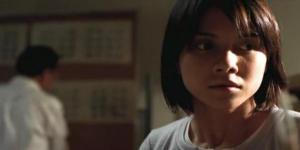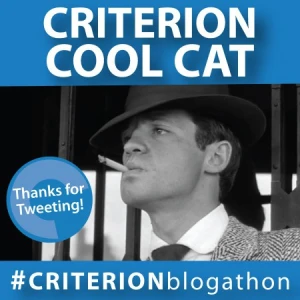Click the banner for Hubrisween Central. Or visit Hubrisween on Letterboxd
I suppose it will be about another thirty years before we get another crop of fin de siècle movies, though, unlike the turn from the 19th century to the 20th, I can’t put my finger on what era truly came to an end with that turn. Possibly the illusion of an untouchable America? The complete demolition of sanity in social discourse? I’m not that much of a big picture person, I can’t really predict what lessons will come out of that crucible. I watch horror movies, so that period for me is when the West started pilfering Asian horror movies for fun and profit.
I guess that started with 1998’s Ringu, translated in 2002 by Gore Verbinski as The Ring. Thereafter followed several domestic transfers: The Grudge, Dark Water, and tonight’s exercise, The Eye. I almost always find the original more compelling, so that’s what we have here.
The Pang Brothers, Oxide and Danny, are two astoundingly prolific filmmakers with 23 movies to their credit in only fifteen years. The Eye is their fourth movie (and, symmetrically enough, they’ve made three sequels for a total of four, though their connection seems pretty tenuous).
 Wong Kar Mun (Angelica Lee) is a young violinist who has been blind since age 2. She receives a cornea transplant, and even in the early stages of blurry vision, she starts seeing unusual things. As things get clearer, she finds that not only can she see the ghosts of people haunting the places of their death, but she also sees a faceless black figure who escorts recently deceased spirits to the beyond.
Wong Kar Mun (Angelica Lee) is a young violinist who has been blind since age 2. She receives a cornea transplant, and even in the early stages of blurry vision, she starts seeing unusual things. As things get clearer, she finds that not only can she see the ghosts of people haunting the places of their death, but she also sees a faceless black figure who escorts recently deceased spirits to the beyond.
That’s a pretty typical horror movie set-up – The Sixth Sense and “I see dead people” was only three years before – but what elevates The Eye above the norm is not only Lee’s expressive and sympathetic performance, but the layers of detail the Pangs bring to the table. I like, for instance, her therapist Dr. Wah (Lawrence Chou) holding up a stapler and asking her what it is. Curious, she reaches out for it, but he tells her, “The minute you touch it, you’ll know it’s a stapler. We have to work on your visual vocabulary.” Mun can neither read nor write Chinese, only braille. Her first question to the attending nurse is “Is there a mirror in the washroom?” The Pangs did their research.
 Our heroine isn’t just seeing ghosts, either. When she wakes from the obligatory nightmares, another room is superimposed over hers. And one of the best, most chilling moments is when she realizes that when she looks in the mirror, she isn’t seeing her own face, but the face of the woman whose eyes she now sees through. Finally, for her own peace of mind, she decides to trace this donor and find out why her spirit seems to also be restless.
Our heroine isn’t just seeing ghosts, either. When she wakes from the obligatory nightmares, another room is superimposed over hers. And one of the best, most chilling moments is when she realizes that when she looks in the mirror, she isn’t seeing her own face, but the face of the woman whose eyes she now sees through. Finally, for her own peace of mind, she decides to trace this donor and find out why her spirit seems to also be restless.
Most impressive is that the Pangs give us a happy ending, then you realize there’s still almost fifteen minutes left in the movie; and what comes after is as inexorable as it is horrifying.
I wasn’t blown away, but I was impressed. There’s a lot to like here, and no, I do not feel at all impelled to check out the Americanized version.
Oh, yeah, “Based on a true story”. According to the Pangs, the true story was that a woman, blind from birth, had the operation and could see for the first time in her life. Though recovering normally, she killed herself within a week. That is the basis of The Eye, and about as far as our “based on a true story” goes.
Leave a comment
No comments yet.





Leave a comment